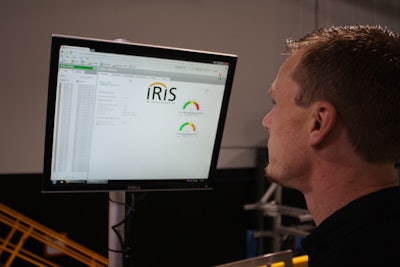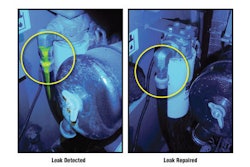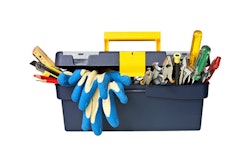
Today’s distribution, manufacturing and post and parcel operations depend on automation to keep product flowing reliably and efficiently. Industry research expects 10 to 15 percent annual growth in adoption of automation over the next three to five years, with overall adoption levels approaching 80 percent by 2019. With so many operations relying on automation, proactive system maintenance plays a critical role in avoiding unplanned downtime and maximizing profits, asset performance, equipment longevity and return on system investment.
Predictive maintenance requires capturing all of the relevant data and the interpretive expertise to put it to proactive use. Today’s computerized maintenance management software (CMMS) is an essential tool designed to do just that — manage data collection, analysis, planning and execution for an informed preventive lifecycle maintenance program.
However, these benefits assume an effective and fully developed implementation. Results can quickly sour and the CMMS can become unusable if ill-equipped operations attempt the implementation in- house or use a vendor unfamiliar with their industry. Collecting on the promise of a CMMS requires an experienced, trusted partner armed with a deep pool of reliable data and an understanding of client business goals.
Avoid Unfulfilled Potential
The market offers several competitive CMMS platforms, with similarly robust capabilities and features to build, manage and execute strategic maintenance programs. The differentiation comes from the CMMS vendor’s industry experience and implementation support to set a program up for success and translate potential improvements and safeguards into concrete results.
Unsuccessful implementations are usually not a result of inherent software deficiencies, but due to other factors, like dirty data, deficient management framework and poor vendor support. These limit the effectiveness of individual CMMS installations and further issues such as a lack of scalability and standardization, add unnecessary complexity to multi-site implementations.
Here are five key factors to ensuring a successful material handling CMMS installation:
No. 1. Sufficient Amounts Of Accurate Data
A CMMS application is only as effective as its data quality allows it to be. It can take five to seven years for a single site to accumulate sufficient amounts of data to set benchmarks and provide an informed foundation for strategic maintenance. Missing assets, incomplete procedures or outdated spare parts information sacrifice data set size and accuracy, greatly reducing program effectiveness.
Choosing a vendor with experience monitoring and managing material handling systems provides access to the right data and the experience necessary to put it to productive use. Utilizing a CMMS vendor with relevant material handling experience provides the added value of gaining access to years’ worth of relevant industry-specific data from multiple implementations, including information from both its own systems and equipment from other manufacturers. At startup, the CMMS provider sets up a standardized framework to handle local data collection and analysis, providing a scalable foundation for comparison and data sharing across multiple sites.
No. 2. Expertise And Processes To Extract The Most Value From Data
Business intelligence-driven process improvements drive the ongoing benefit of an effective CMMS implementation. The path to success requires extensive data input with proper organization and workflow. A new installation starts with importing data from existing database libraries and can require the creation of more than 200 different assets in the software, including root cause analysis, mean time to failure and measurement thresholds to trigger actions. Multi-site implementations add an extra layer of complexity due to the importance of a scalable, consistent framework to enable comparisons and data sharing between facilities. This places a premium on standardization and repeatability with performance indicators, equipment and process nomenclature.
After setting up the environment to effectively analyze data, the CMMS plays an active role managing and executing maintenance functions, automatically scheduling work orders as key performance indicators hit preset measurement thresholds. But the CMMS is not simply a management tool to commission work. It leaves no part of the maintenance process unassisted, with up-to-date spare parts pricing and a full suite of features to help both management and technicians work more efficiently, with automated phone or email alerts based on predetermined asset conditions.
The CMMS assigns tasks based on individual expertise and location within the facility, and prevents technicians from switching between different technology platforms by hosting product manuals, preventive maintenance procedures and OSHA compliance metrics all in one place. This allows technicians to work without delays or interruptions, allowing operations to save money on overtime expenses, decrease cost per repair, reduce paperwork and use fewer contractors. The software also future-proofs itself by cataloguing consistent process improvement, automatically updating compliance modules, procedures and work orders with best practices gleaned from other sites throughout the vendor’s installation network.
No. 3. Support From A Vendor With Experience Specific To The Industry
The proliferation of capable CMMS platforms is a testament to the tool’s value in nearly any application with automated equipment. While several suppliers offer robust software across several industries, they lack the specialized material handling expertise and ongoing support to help end users make the most of their investment.
The difference between using a generalist software vendor and a true material handling partner is the value of specialization. Some suppliers may be learning the industry on the job as they attempt to assist a customer, resulting in slower, less-effective and more expensive support. This is similar to buying a car from a specialized dealer with experience supporting that specific make and model, as opposed to buying the same model from a dealer with no experience maintaining and supporting similar cars.
A premier material handling CMMS partner has a high-level of familiarity with warehouse automation processes, order fulfillment systems and business requirements that allows them to plan for and respond to the nuances of manufacturing and retail distribution operations. This includes industry standardized reporting with expert support, implementation and maintenance scheduling around peak season requirements, and close integration with parts ordering systems to ensure sufficient inventory for routine maintenance and any unplanned outage.
No. 4. A Thorough Implementation With Speed To Match
Updating processes and implementing new systems requires careful planning and consideration to enhance, not disrupt, operations. This starts with establishing shared expectations between customer and vendor, with a clear implementation plan that accounts for customer scheduling demands, such as uptime requirements and seasonal peaks. Experienced material handling CMMS providers typically take two months to complete an installation following receipt of necessary documentation and approval from the customer.
In addition to efficient and timely installation, a quality implementation lays the foundation for sustainable success. It preserves maintenance best practices by scheduling services at proper intervals to keep systems healthy and avoid conflicting with peaks, while also providing detailed work order instructions that include the latest state and federal safety procedures to promote consistent, common work standards. CMMS can even connect with a client’s enterprise resource planning (ERP) system, with the ability to feed human resources modules with staff performance reporting.
No. 5. Customer Involvement Is Key
When purchasing any tool to enhance business processes, end users must also invest the time and attention necessary to produce maximum results. CMMS customers must be engaged with the vendor throughout the process, from design and installation to training and ongoing evaluation. This involvement enables a neatly structured program to accommodate site-specific criteria and enable the cleanest handover following implementation, with well-informed staff empowered to use their system to its full potential. Following handover, regular dialogue between vendor and customer informs future updates to the program to enhance data analysis, maintenance procedures and more.
Conclusion
Properly implementing a CMMS offers more efficient, better-quality maintenance operations structured to accommodate site-specific and enterprise-wide requirements, all with reduced management overhead from a single, centralized portal. However, translating these benefits from potential to reality requires an engaged customer and a reputable partner armed with industry-specific experience and data.
Scott Turner is CMMS development manager for Intelligrated.























